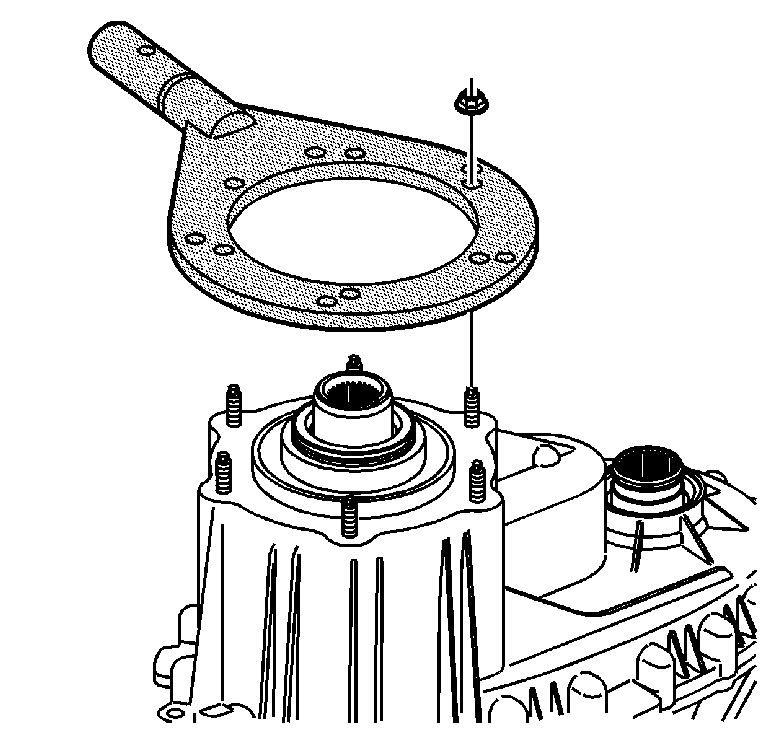
- Attach the
J 45759
to the
transfer case using the adapter studs. All of the transfer case disassembly procedures can be performed with the case mounted to the
J 45759
.

- Mount the
J 3289-20
(1) to a sturdy workbench.
- Install the
J 45759
(2) into
J 3289-20
(1) and secure with pivot pin.

- Remove the fill plug (1) and the drain plug (2) and drain the transfer case fluid.
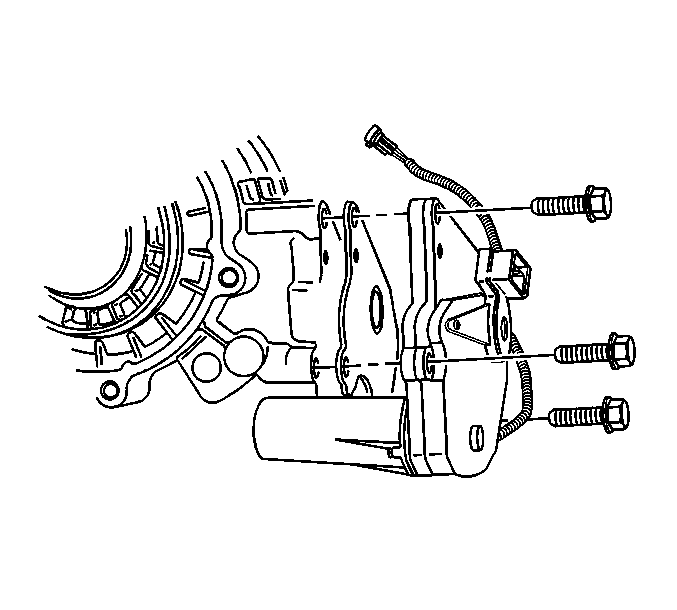
- Remove the encoder motor mounting bolts.
- Remove the encoder motor assembly.
- Remove the actuator insulator gasket.
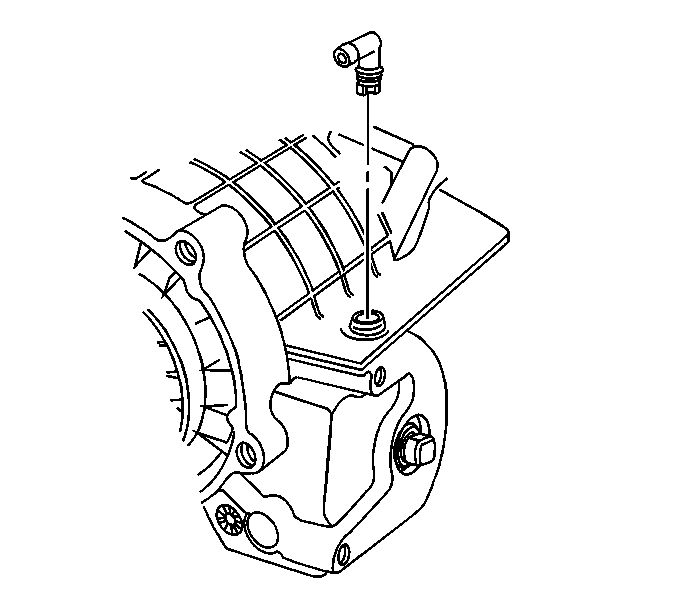
- Remove the plastic vent from the case; a NEW aluminum vent must be installed during assembly.

- Remove the rear vehicle speed sensors (VSS).
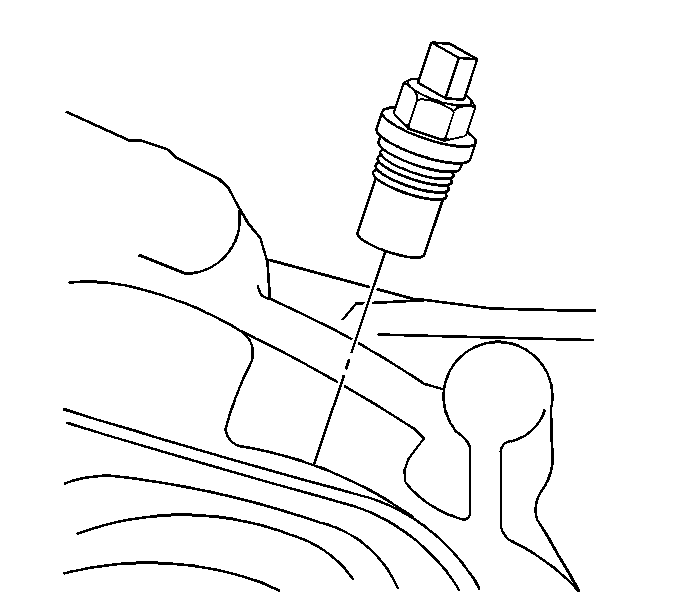
- Remove the front VSS.
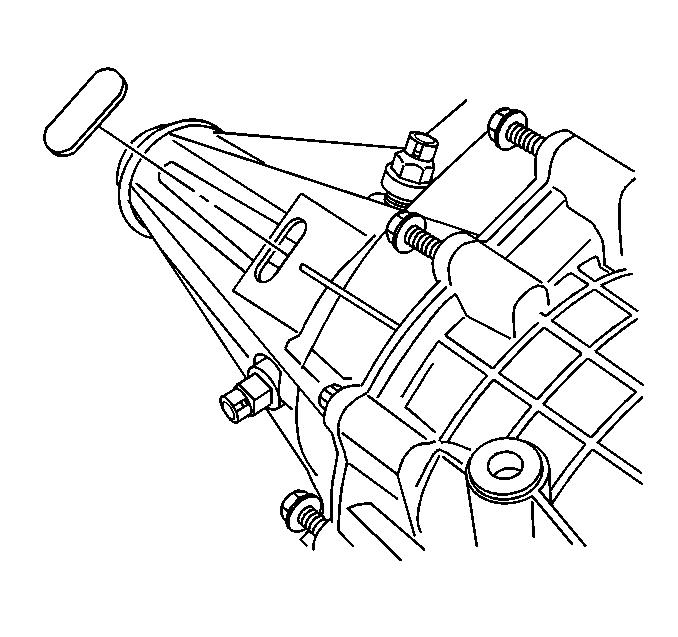
- Remove the access hole plug.

Notice: Do not damage the sealing surfaces of the transfer cases or the shafts
when prying the seals for removal. Damaging the sealing surface may cause
leakage or require replacement of the damaged component.
- Remove the input shaft seal by prying it out of the front case.
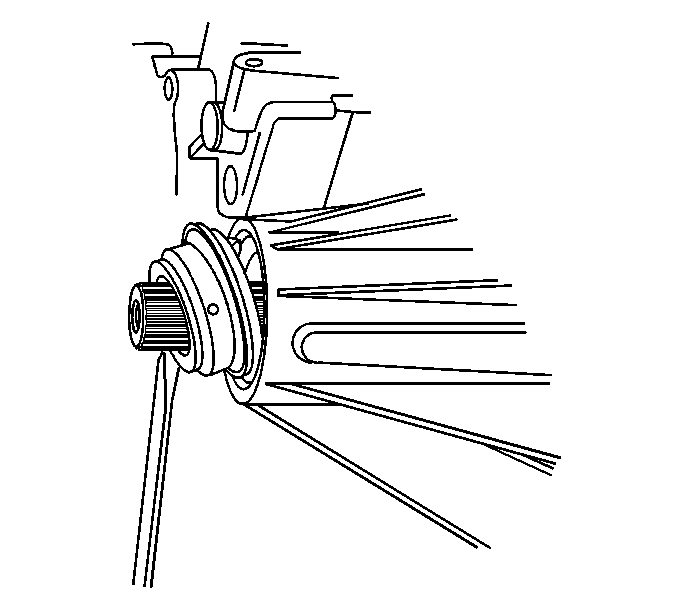
- Remove the rear output shaft seal.
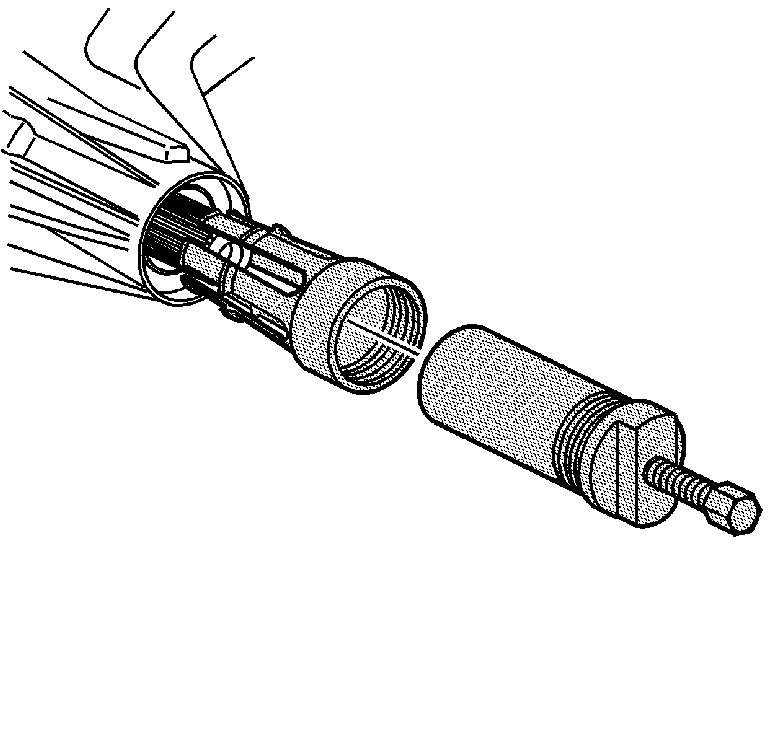
- Inspect the rear output shaft bushing for scoring or wear.
- Remove the rear output shaft bushing using the
J 45380
.
| • | Install the finger section of the
J 45380
in front of the bushing. |
| • | Install the tube and forcing screw assembly to the finger section. Ensure the forcing screw is backed out. |
| • | Using a wrench on the forcing screw, remove the rear output shaft bushing. |
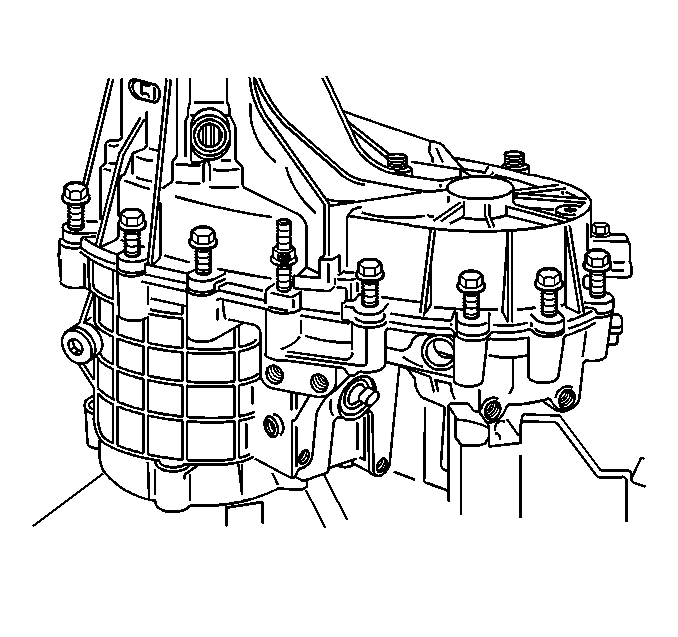
- Remove the transfer case retaining bolts and washers.
Mark the location of any brackets.
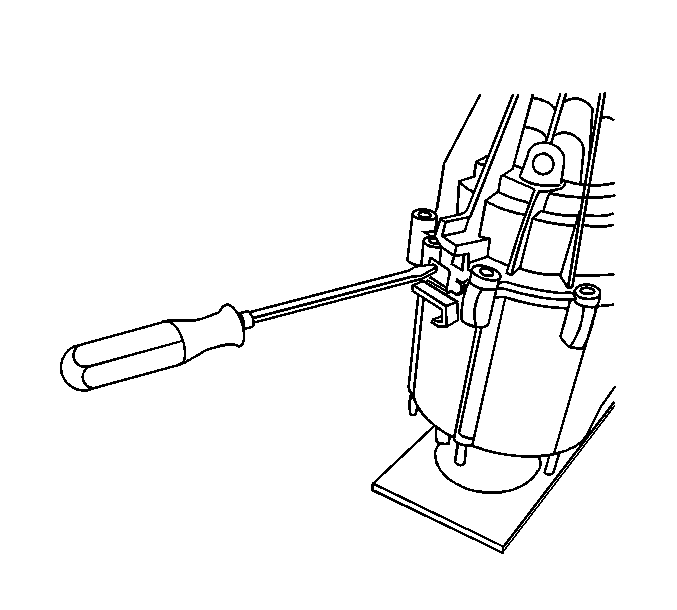
Notice: Do not nick, scratch or damage the sealing surface. The
sealing surface is a machined surface. Damage to the machined surface can
cause leakage.
- Insert a flat-blade screwdriver into the slot on the left side of the transfer case.

- Insert a flat-blade screwdriver into the slot on the right side of the transfer case.
- With equal pressure, press down on the screwdrivers in order to separate the front case half and the rear case half.
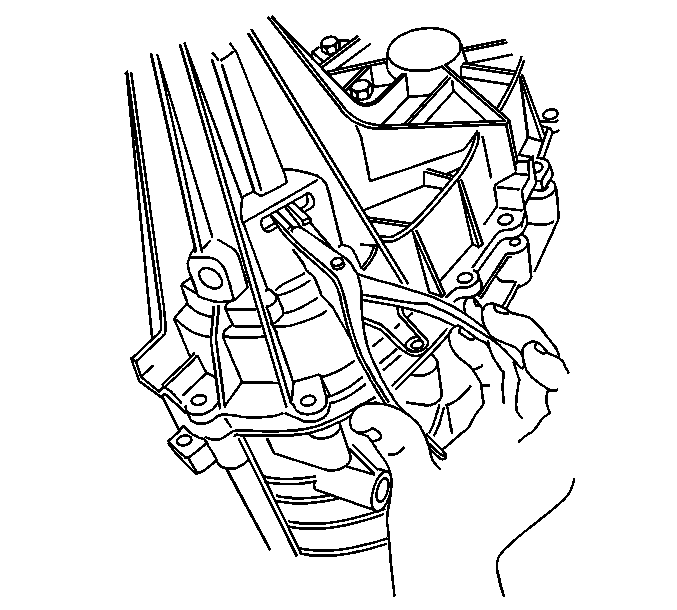
- Insert a pair of snap ring pliers and release the outer retaining ring for the rear output shaft bearing.
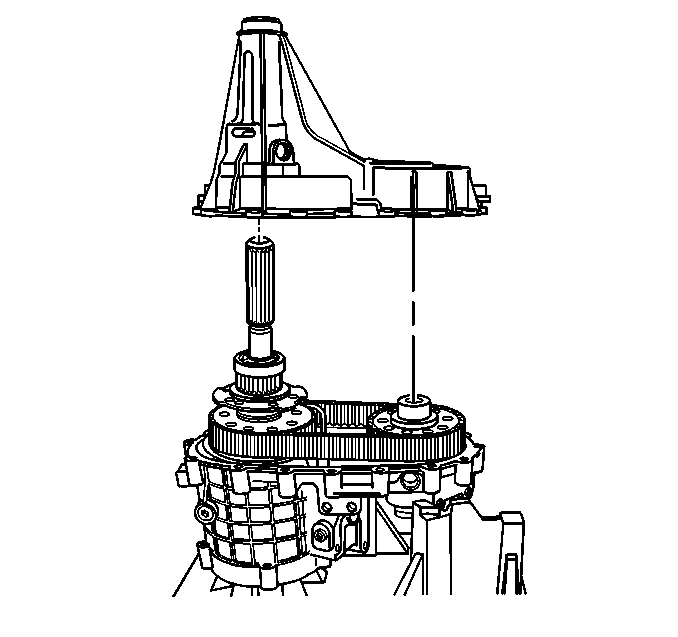
- Remove the rear case half from the front case half.
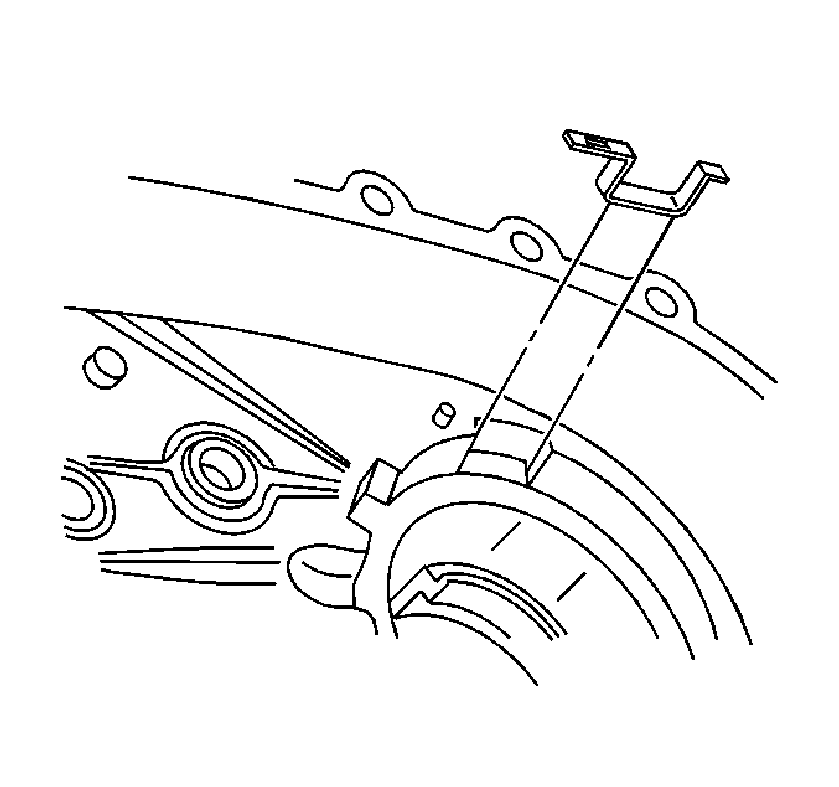
- Remove the oil pump wear sleeve, a new wear sleeve is required.
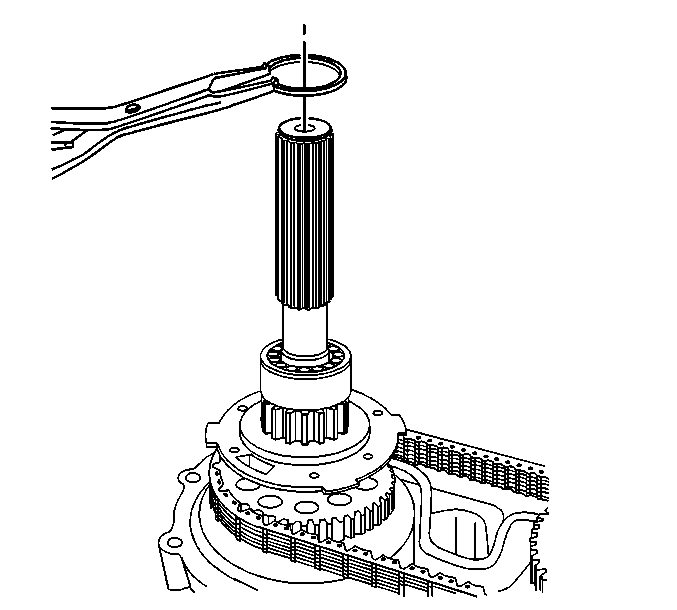
- Remove the rear output shaft rear bearing retaining ring.
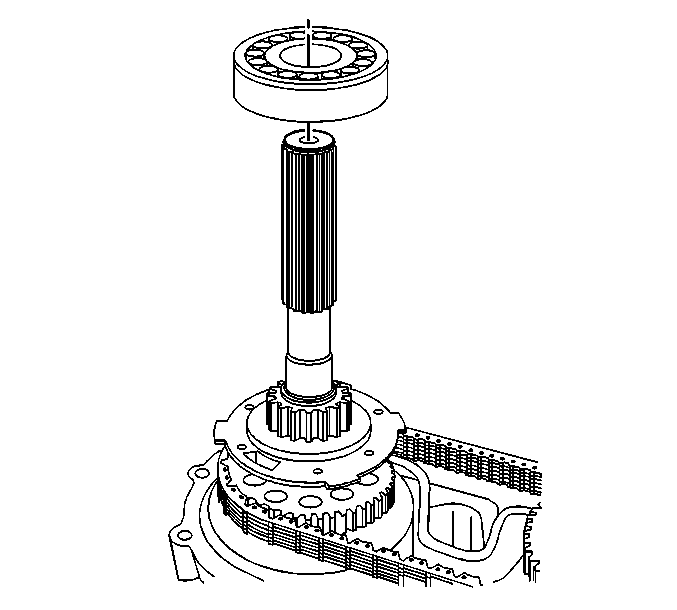
- Remove the rear output shaft rear bearing.
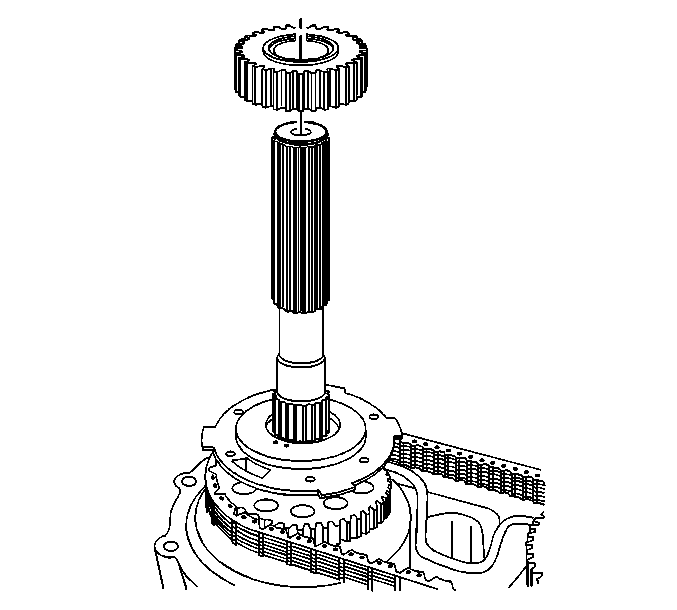
- Remove the rear output shaft speed sensor reluctor wheel.
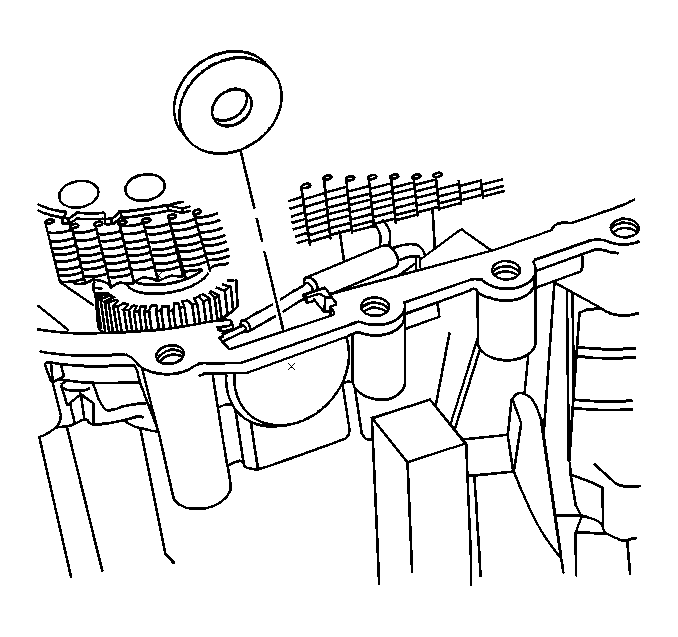
- Remove the magnet.
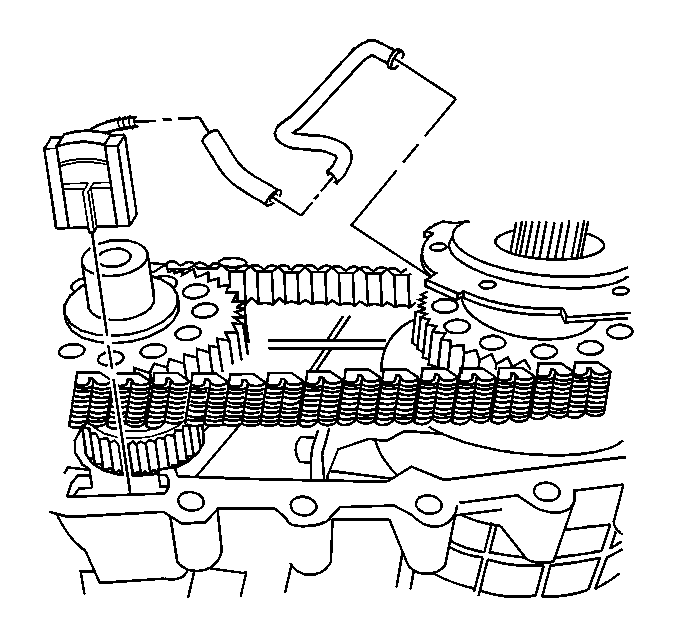
- Disconnect the oil pump suction pipe from the oil pump screen.
- Remove the oil pump screen from the front case half.
- Remove the oil pump suction pipe from the oil pump inlet hole.
- Remove the oil pump suction pipe O-ring from the oil pump.
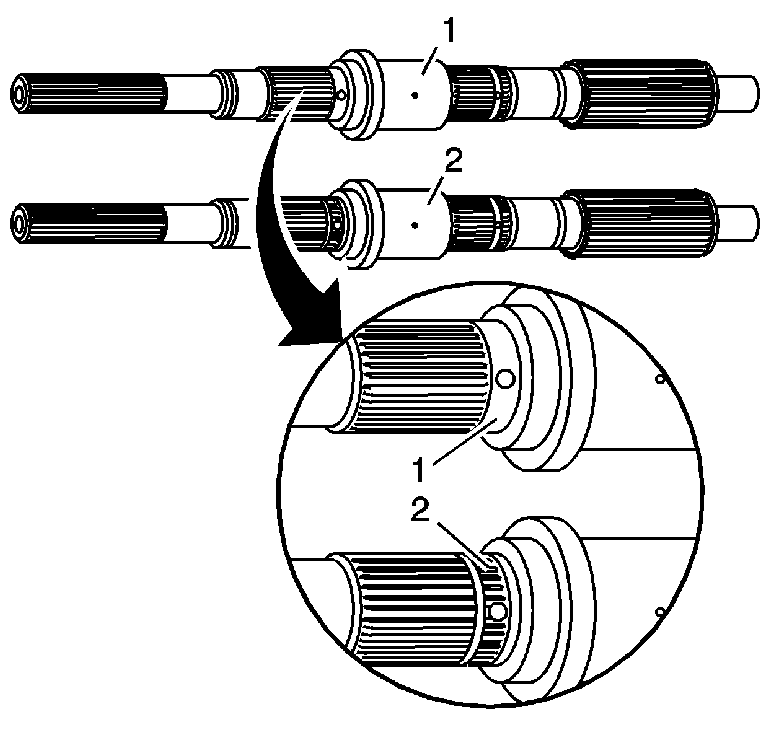
Important: The rear output shaft may be an original design (2) or the replacement design (1). The original design rear output shaft (2) uses an oil pump wave washer above the oil pump and a retaining ring under
the oil pump. The original design rear output shaft (2) is identified by the splines in the area by the oil gallery hole. The replacement design rear output shaft has a smooth area by the oil gallery hole. Ensure to follow the steps for the correct rear
output shaft.
- Inspect the rear output shaft to identify as an original design (2) or the replacement design (1).
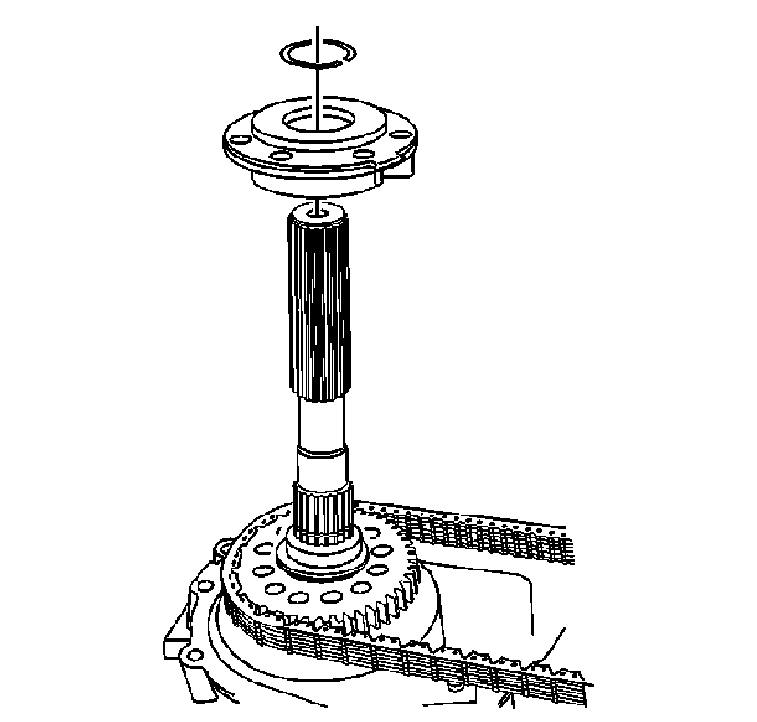
- If original design rear output shaft, remove the oil
pump wave washer.
- Remove the oil pump assembly.
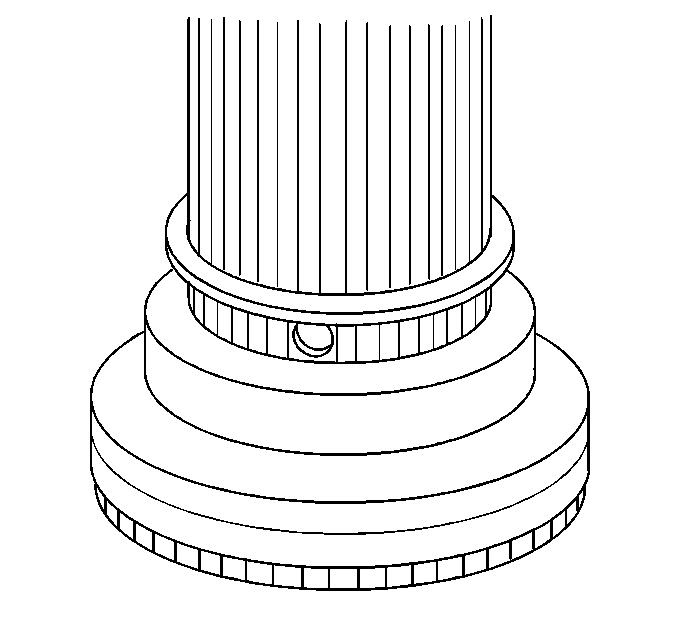
- If original design rear output shaft, remove the rear output shaft retaining ring.
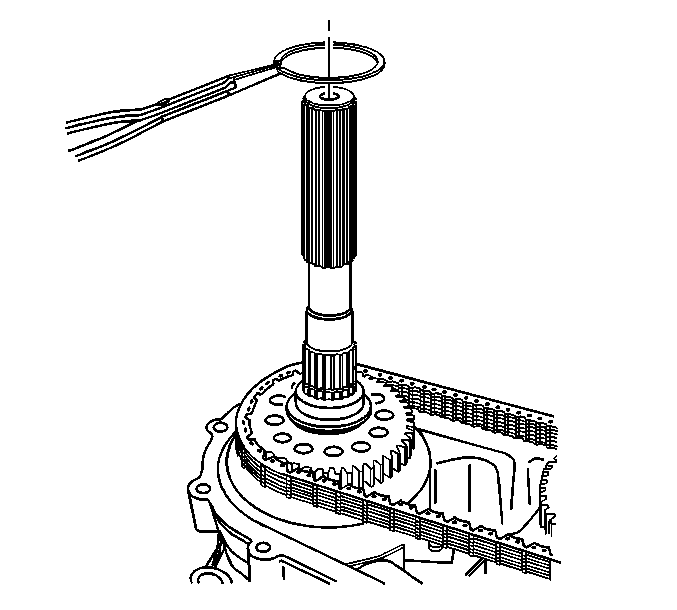
- Remove the drive sprocket retaining ring.
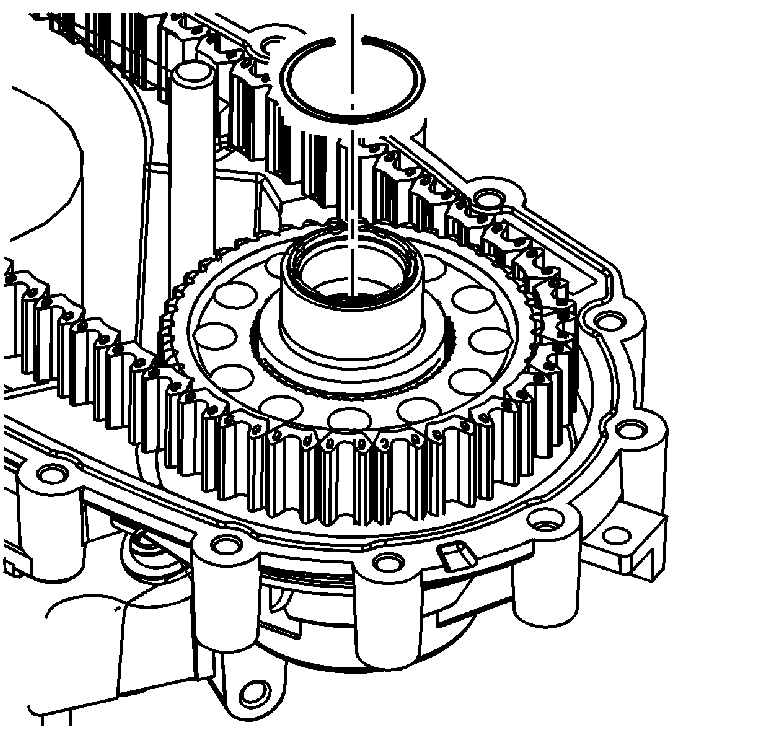
- Remove the driven sprocket retaining ring.
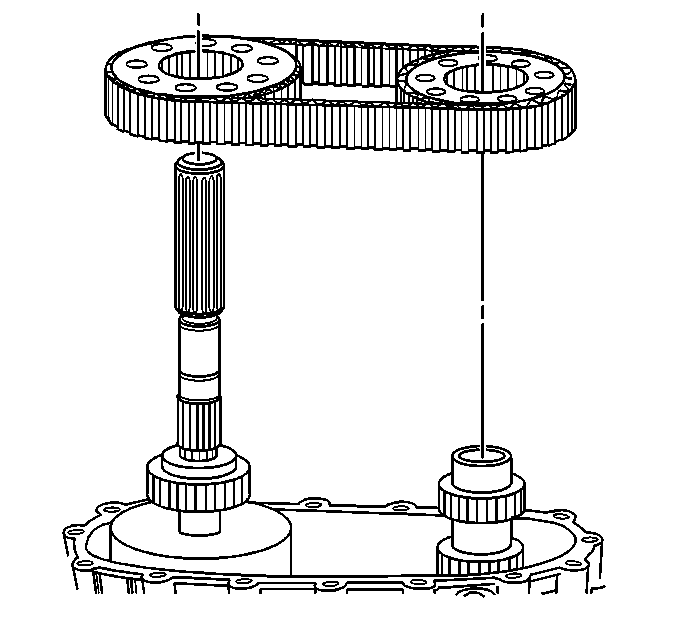
Important: If the chain and sprockets are to be used again, mark the relationship of the chain to the sprockets in order to mark the wear patterns.
- Remove the chain and sprockets.
- Remove the chain from the drive sprocket and driven sprocket.
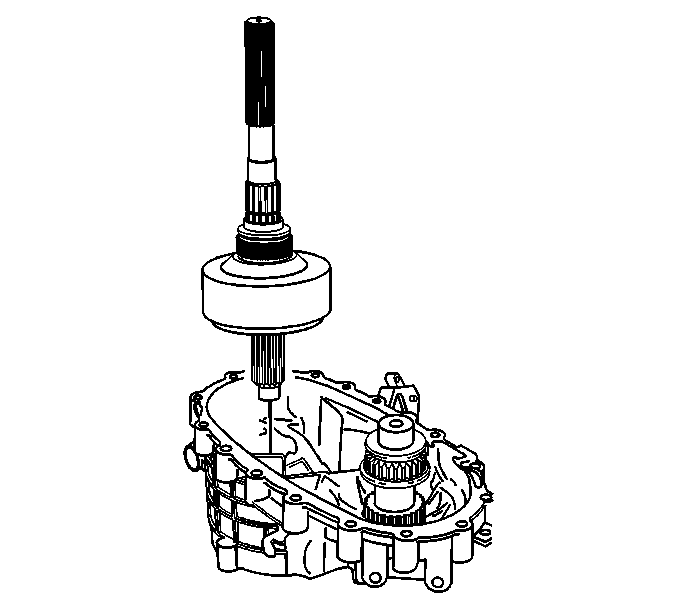
- Remove the rear output shaft assembly.
- Mount the rear output shaft assembly in a soft-jaw vise with the output end up.
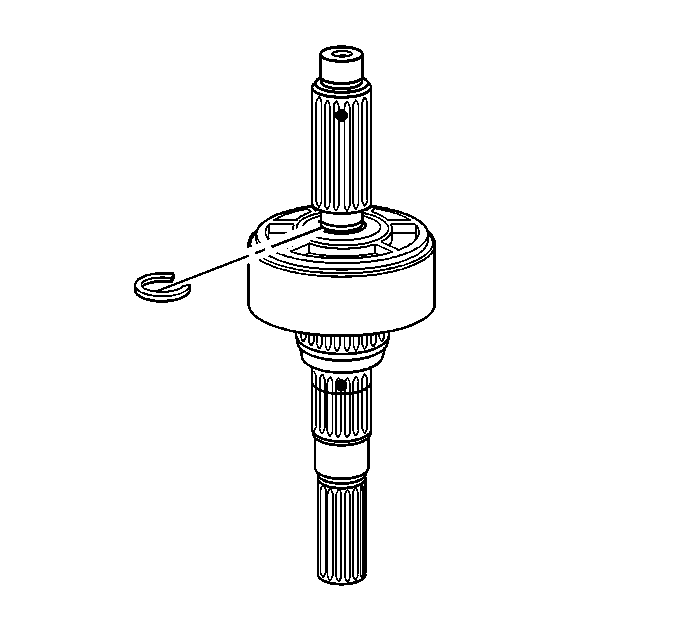
- Remove the clutch assembly retaining ring. Push down on the clutch pressure plate to access the retaining
ring.
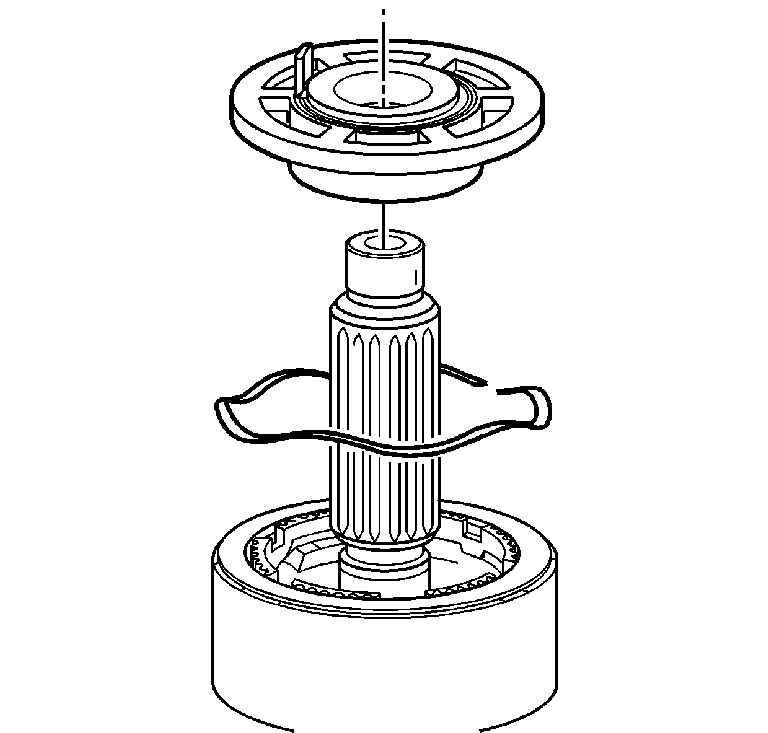
Important: Shown, are the components for the NVG 246 in the following steps, for the clutch system disassembly. The NVG 236 clutch disassembly is the same. The NVG 236 uses a thicker clutch backing plate assembly,
and there are 8 inner friction plates and 7 outer steel separator plates.
- Remove the clutch pressure plate assembly.
- Remove the clutch pressure plate spring.
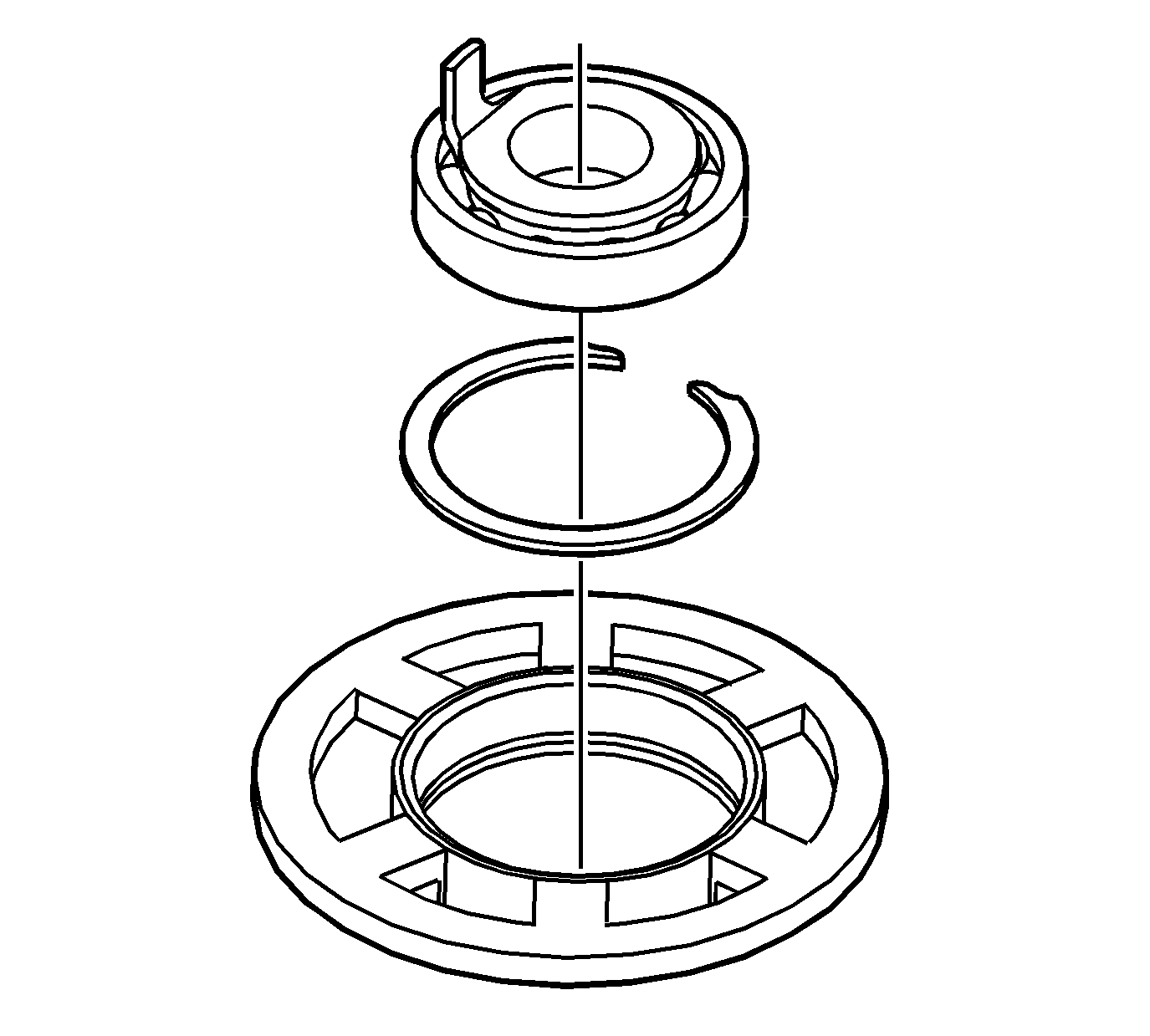
- Remove the clutch pressure plate bearing with the clutch pressure plate hub from the clutch pressure plate.
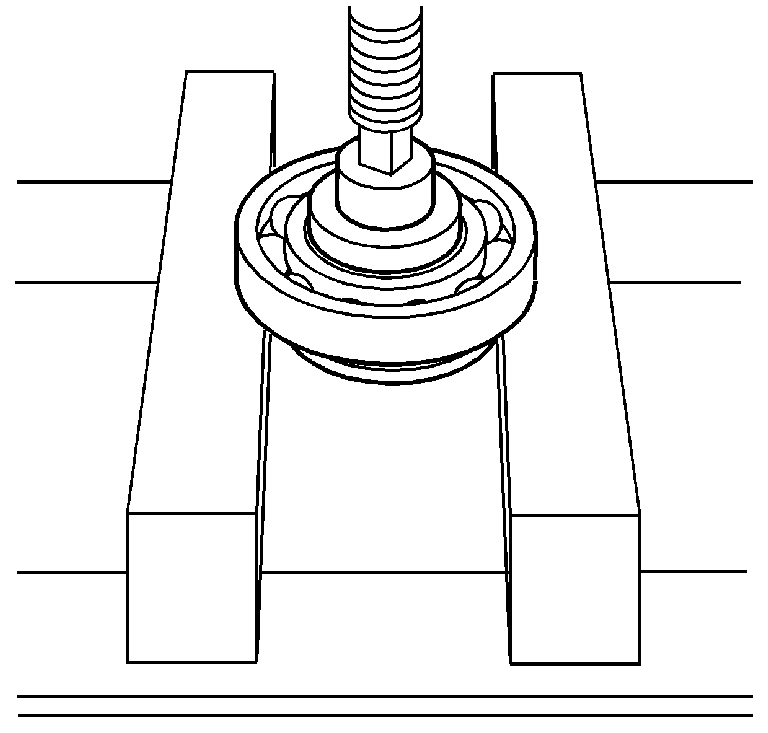
- Inspect the bearing for being faulty. Refer to
Transfer Case Cleaning and Inspection
.
- If the bearing is faulty, using a hydraulic press and a suitable adapter, remove the clutch pressure plate bearing from the clutch pressure plate hub.
- Discard the bearing after removal.
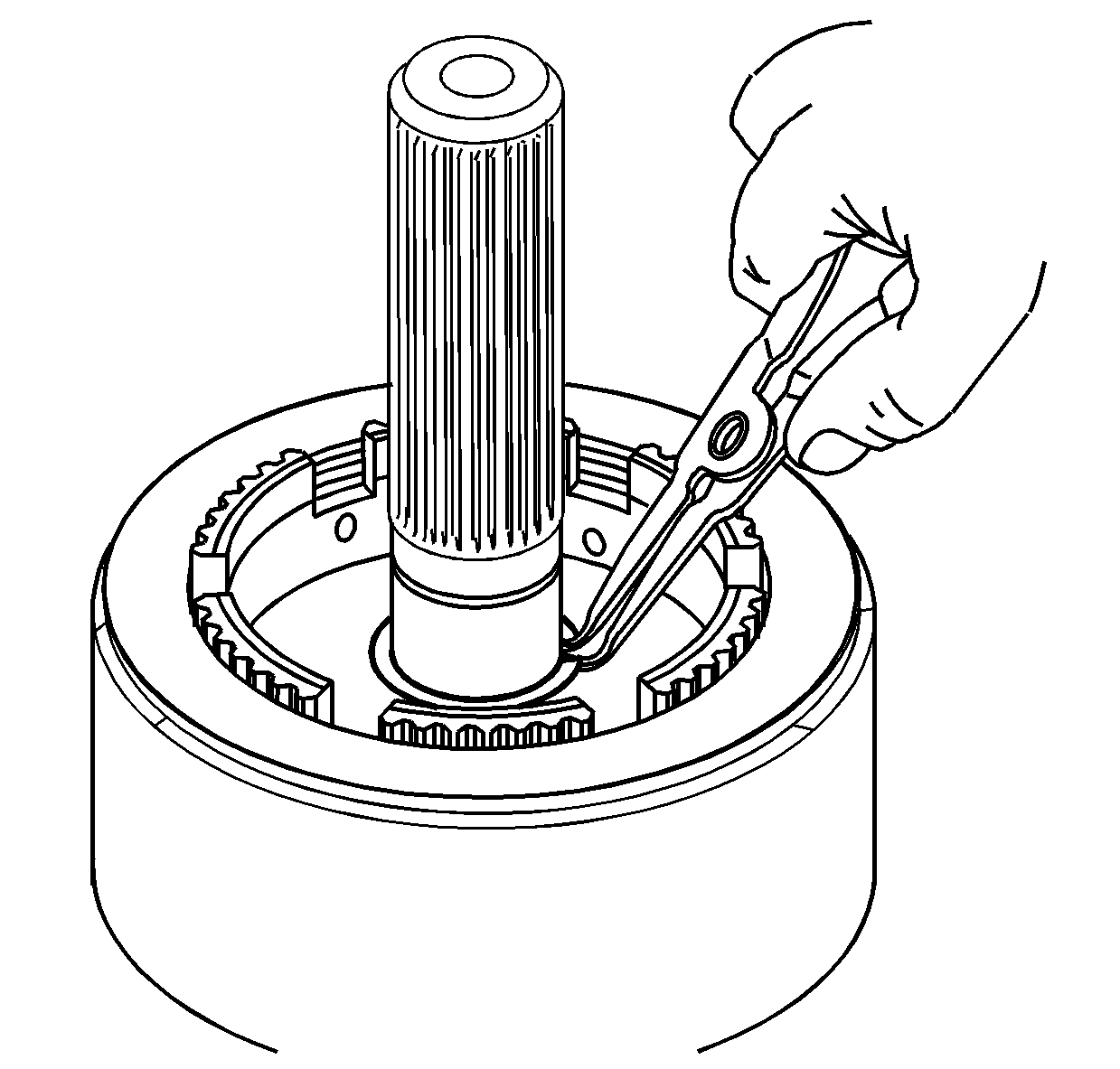
- Remove the clutch hub retaining ring.
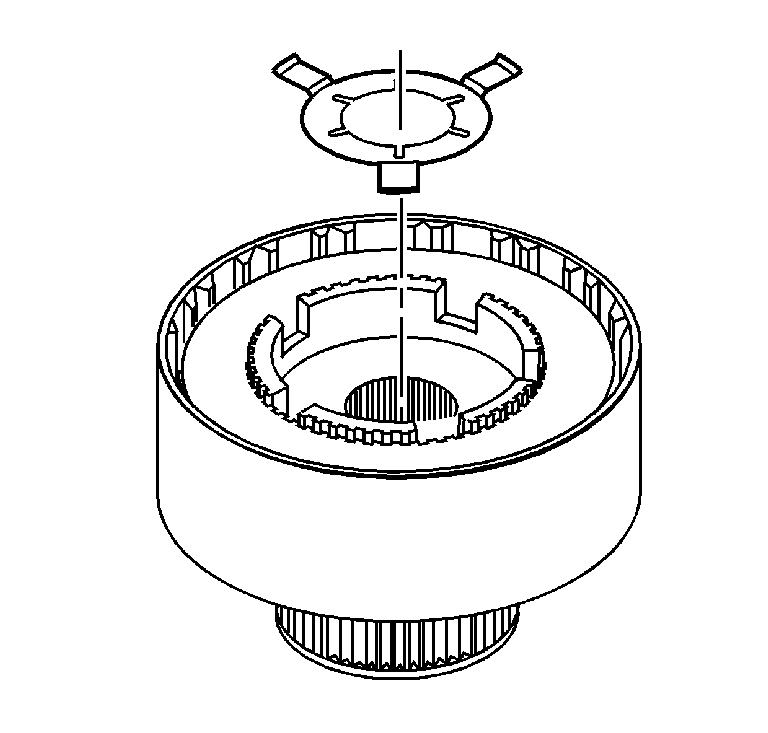
- Remove the clutch housing and hub assembly from the rear output shaft.
- Remove the clutch hub oil restrictor plate.

- Turn the clutch assembly over on a work bench.
- Remove the clutch housing.
- Remove the clutch hub.
- Remove the clutch backing plate.
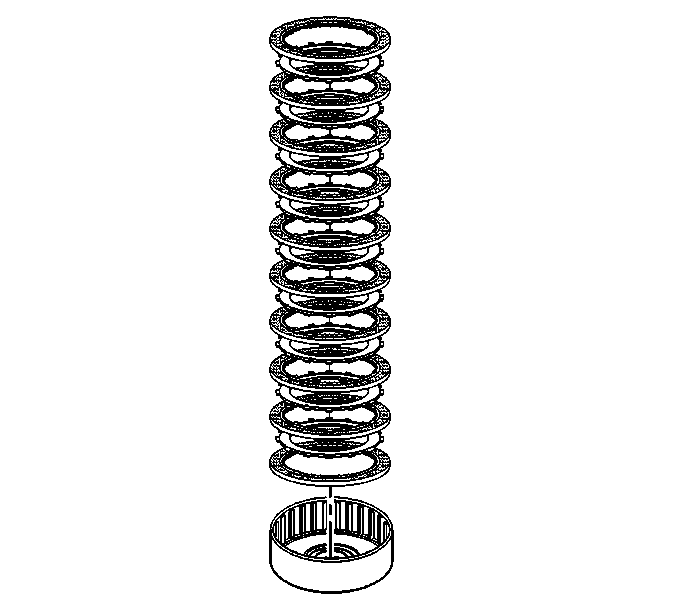
Important: Do not wash the clutch friction or inner pressure plates in cleaning solvent.
- Separate the clutch plates for inspection.
- Remove and discard the shim or shims.
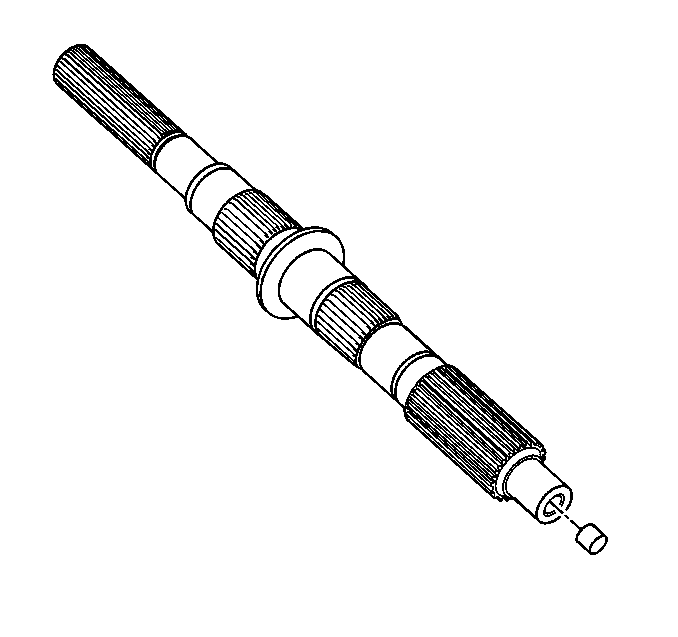
- Remove the oil restrictor from the rear output shaft, if replacing the shaft.
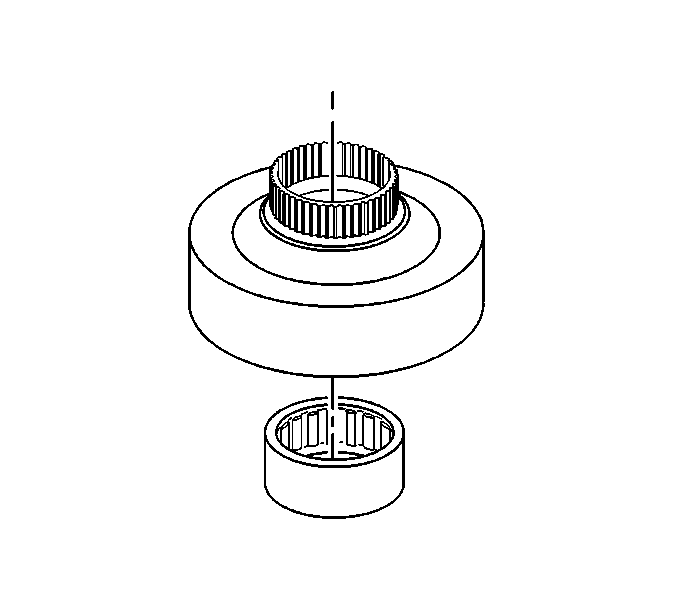
- Inspect the bearing in the clutch housing for being faulty. Refer to
Transfer Case Cleaning and Inspection
.
- If the bearing is faulty, use a brass drift and a hammer to remove the bearing.
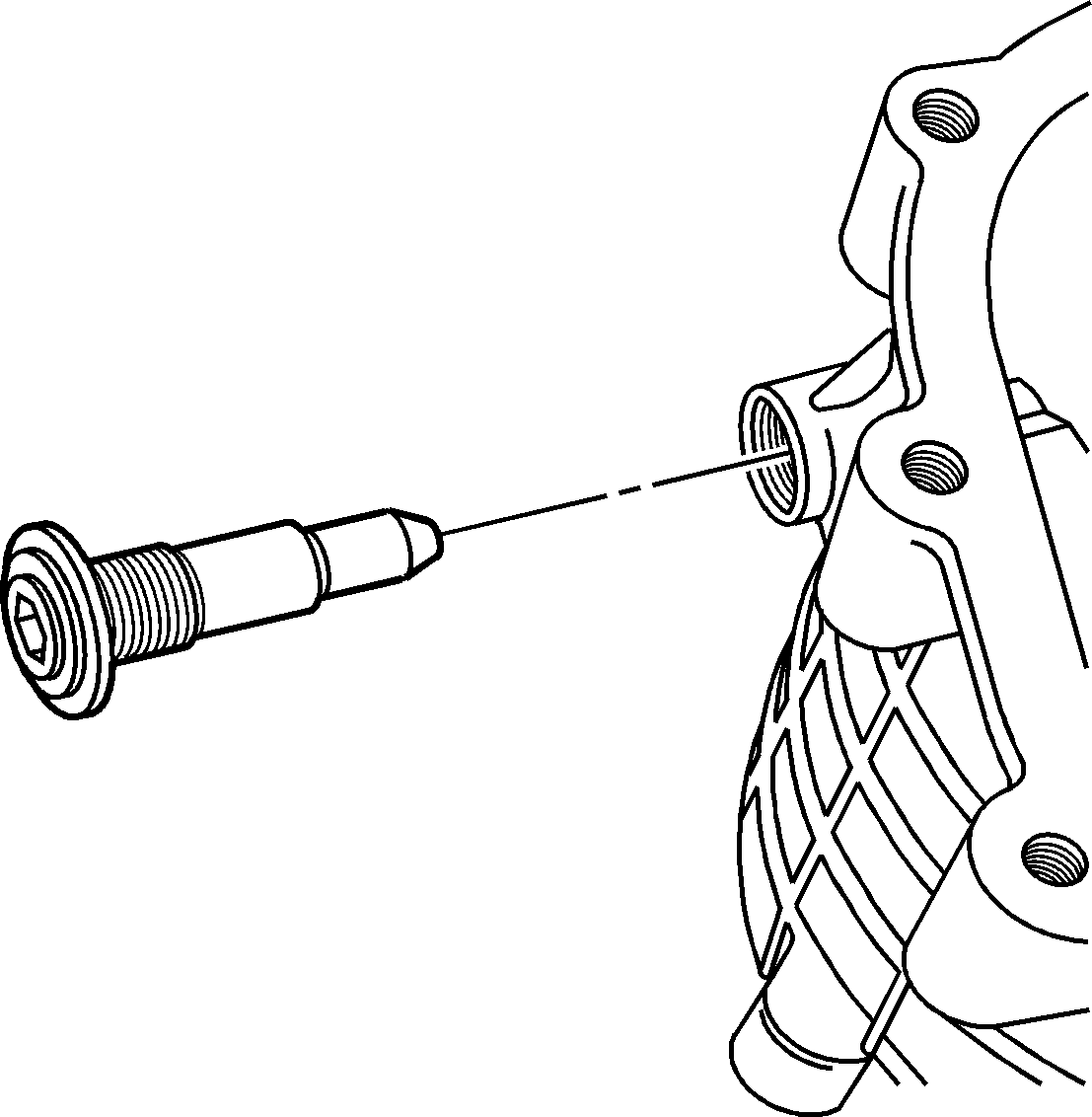
- Remove both of the clutch lever pivot pins with the aluminum washers and the O-ring seals.
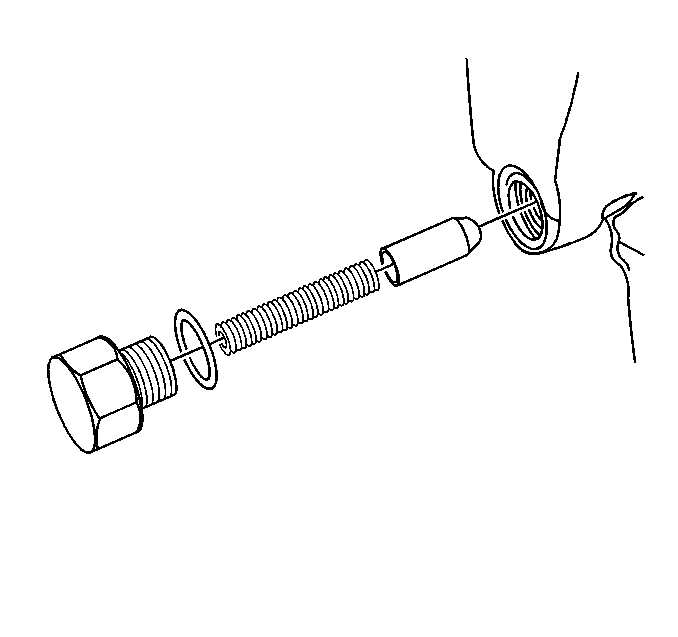
- Remove the shift detent spring bolt.
- Remove the following components:
| • | The shift detent plunger plug O-ring seal |
| • | The shift detent spring |
| • | The shift detent plunger |
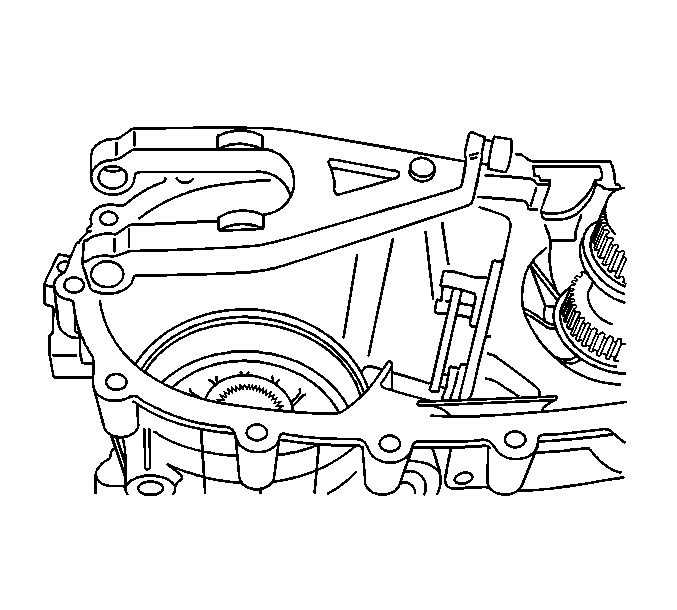
- Remove the clutch lever from the control actuator lever.
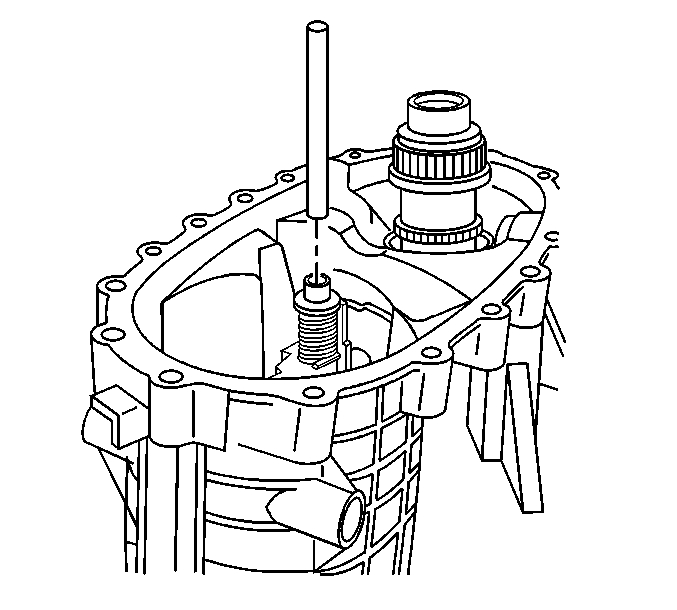
- Remove the shift fork shaft.
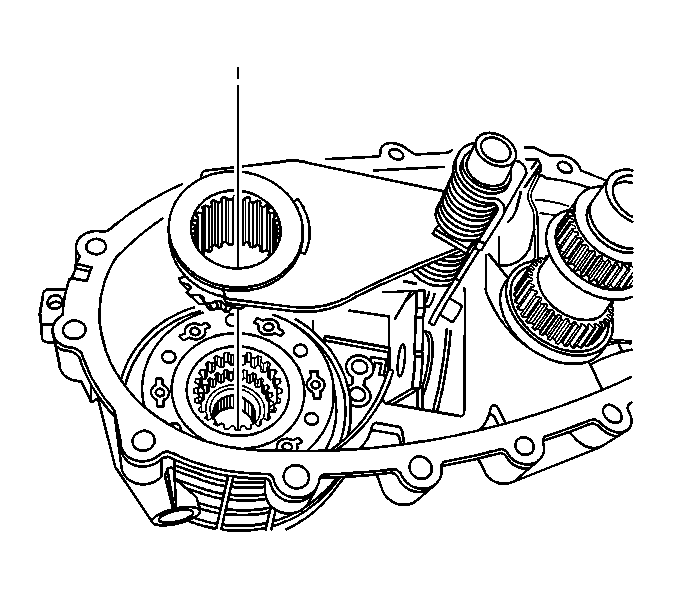
- Remove the range shift fork and the range shift sleeve as an assembly.
It may be necessary to lightly pry the roller
on the shift fork from the control actuator lever.

- Remove the range shift sleeve from the range shift fork.
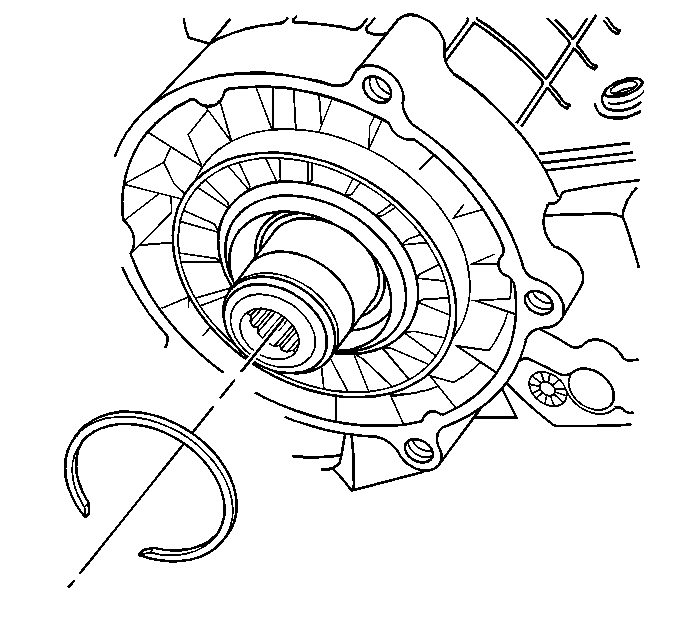
- Remove the outer retaining ring for the input gear bearing.
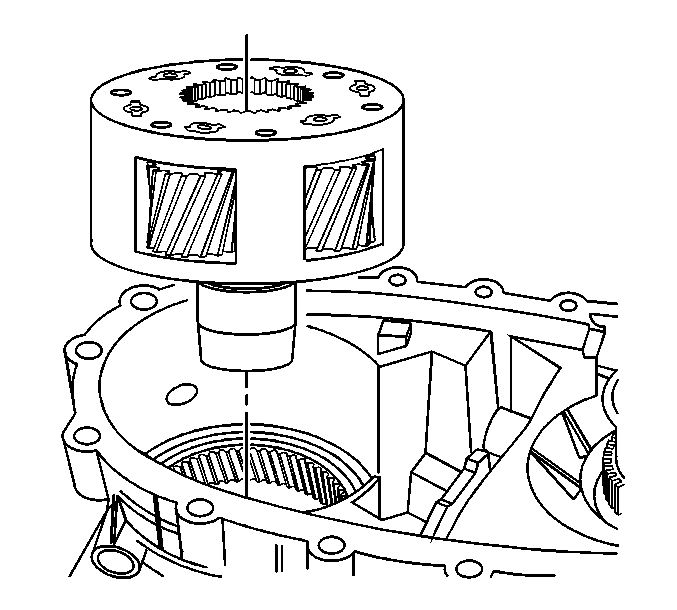
Important: Depending on the version of the NVG 246 transfer case, it may have either a 4 pinion gear or 6 pinion gear planetary carrier assembly. The 4 pinion gear planetary carrier is used with transmission
RPO M30 and the input gear splines are 27 teeth. The 6 pinion gear planetary carrier is used with transmission RPO MT1 and MN8 and the input gear splines are 32 teeth. The NVG 236 uses a 3 pinion carrier. The
repair procedures are the same for both planetary carriers.
- Remove the high/low planetary carrier.
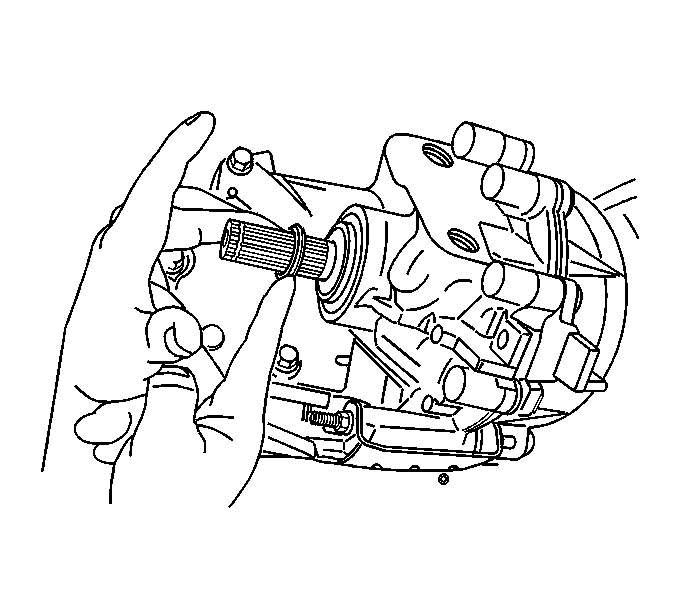
- For the NVG 236, remove the front output shaft dust seal.
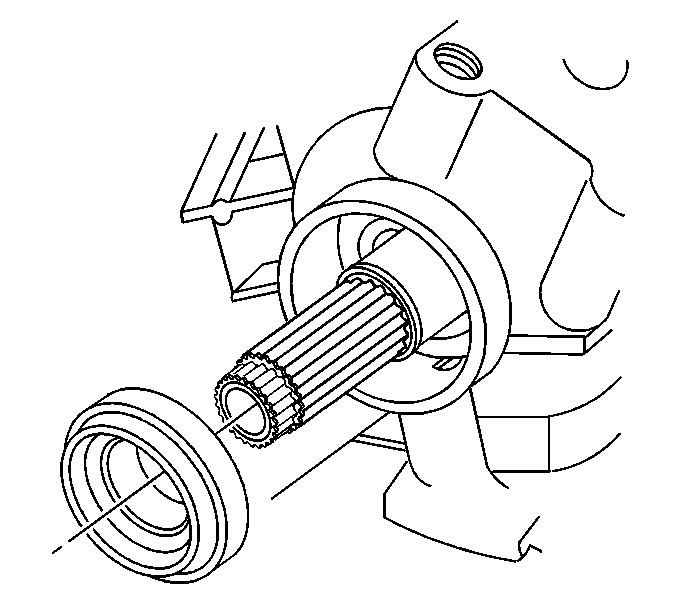
Notice: Do not damage the sealing surfaces of the transfer cases or the shafts
when prying the seals for removal. Damaging the sealing surface may cause
leakage or require replacement of the damaged component.
Important: The front output shaft seal for the NVG 246 may be the internal sealing design. The seal is a two piece and force fit on the front output shaft. The removal of the NVG 246 seal is different and shown later
in the disassembly procedures.
- For the NVG 236, remove the front output shaft seal.
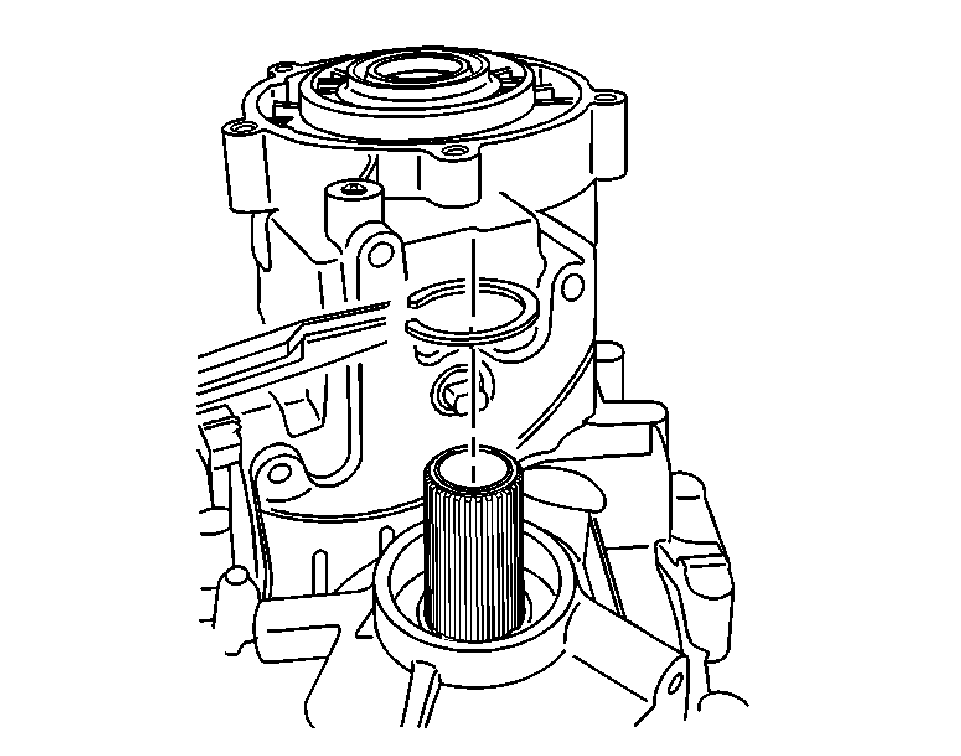
- For the NVG 236, remove the front output shaft
bearing retaining ring.
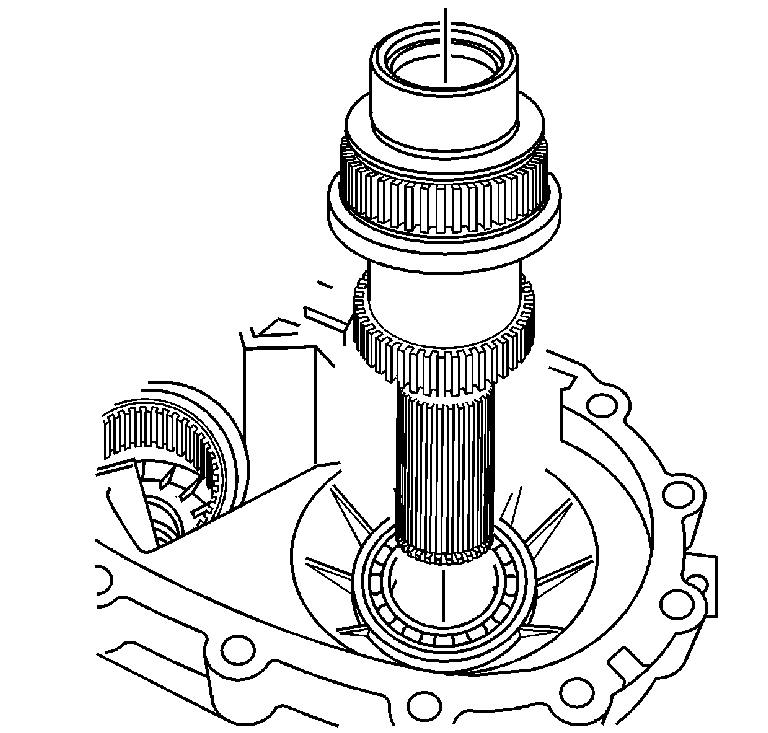
- For the NVG 236, remove the front output shaft assembly.
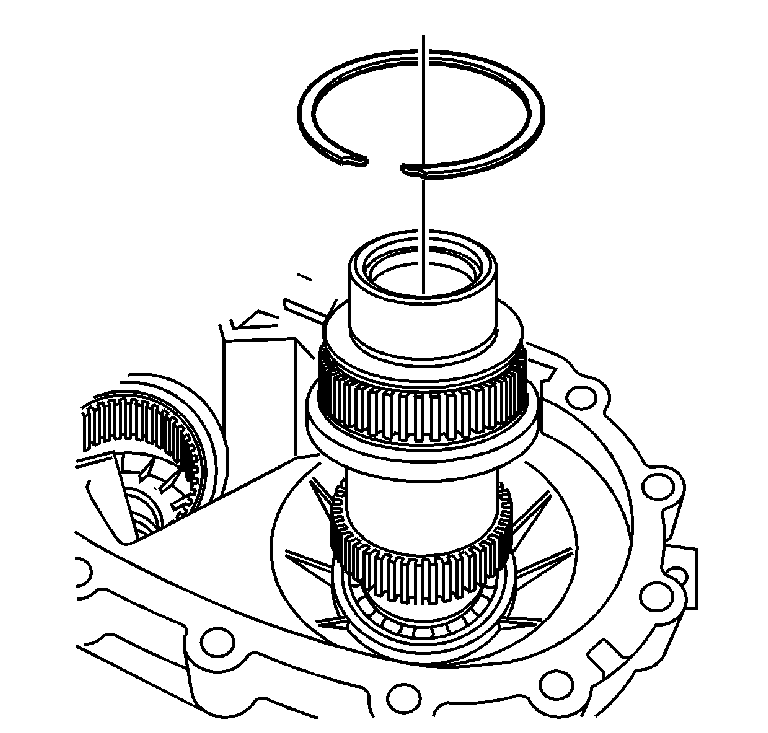
- For the NVG 246, remove the
inner retaining ring for the front output shaft bearing.
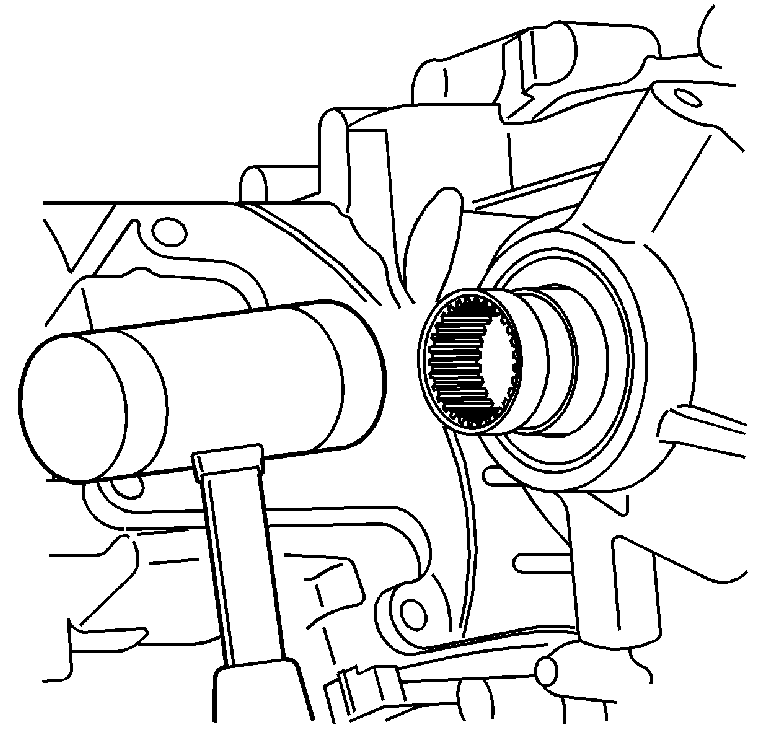
- For the NVG 246, using a soft-face
hammer, remove the front output shaft, with the bearing, from the front case half.

- For the NVG 246, using a suitable punch, remove
the front output shaft seal from the front case half.
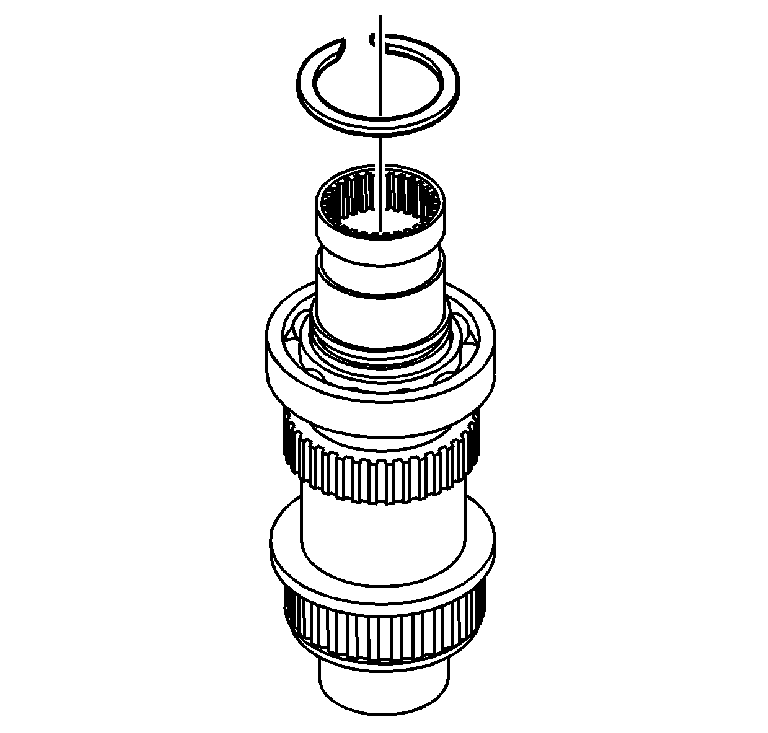
- For the NVG 246, remove the
outer retaining ring for the front output shaft bearing.
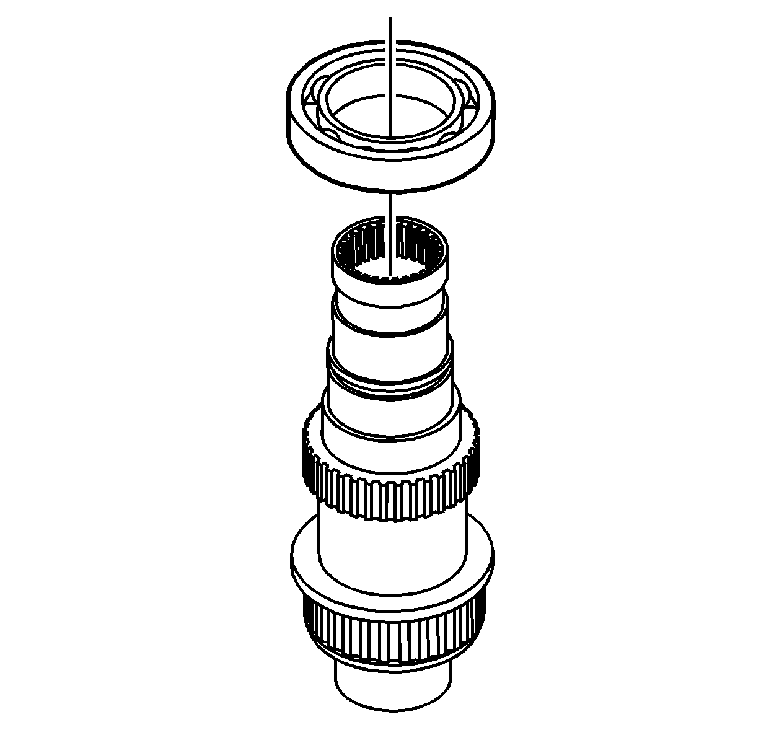
- For the NVG 246, inspect the front output shaft bearing for being faulty.
Refer to
Transfer Case Cleaning and Inspection
.
- For the NVG 246, remove the bearing from the front output shaft. Do not use the bearing again after removal.
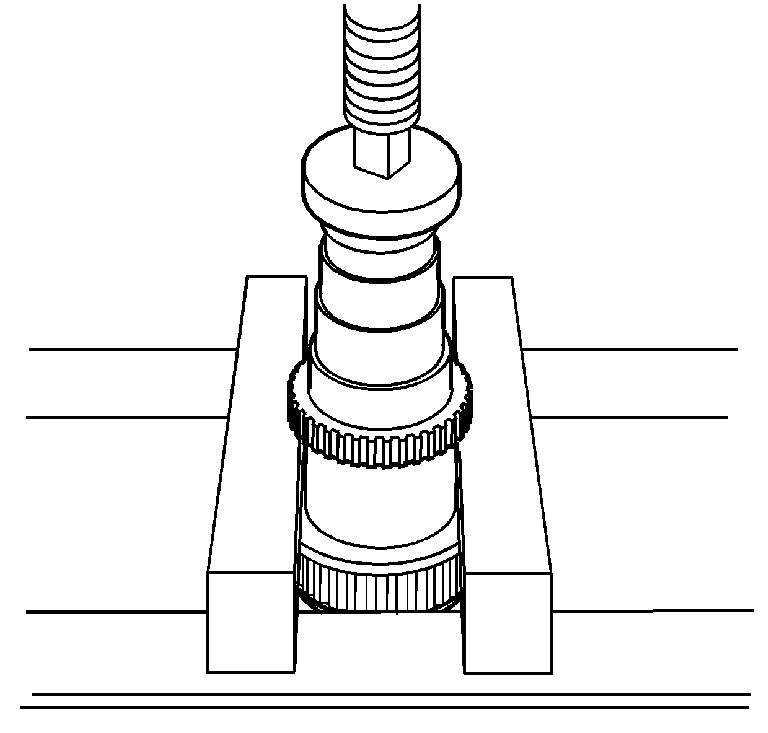
- If damaged, remove the speed sensor reluctor wheel from the front output shaft using a hydraulic press. Removal
of the reluctor wheel for the NVG 246 is shown. The removal of the reluctor wheel for the NVG 236 is the same.
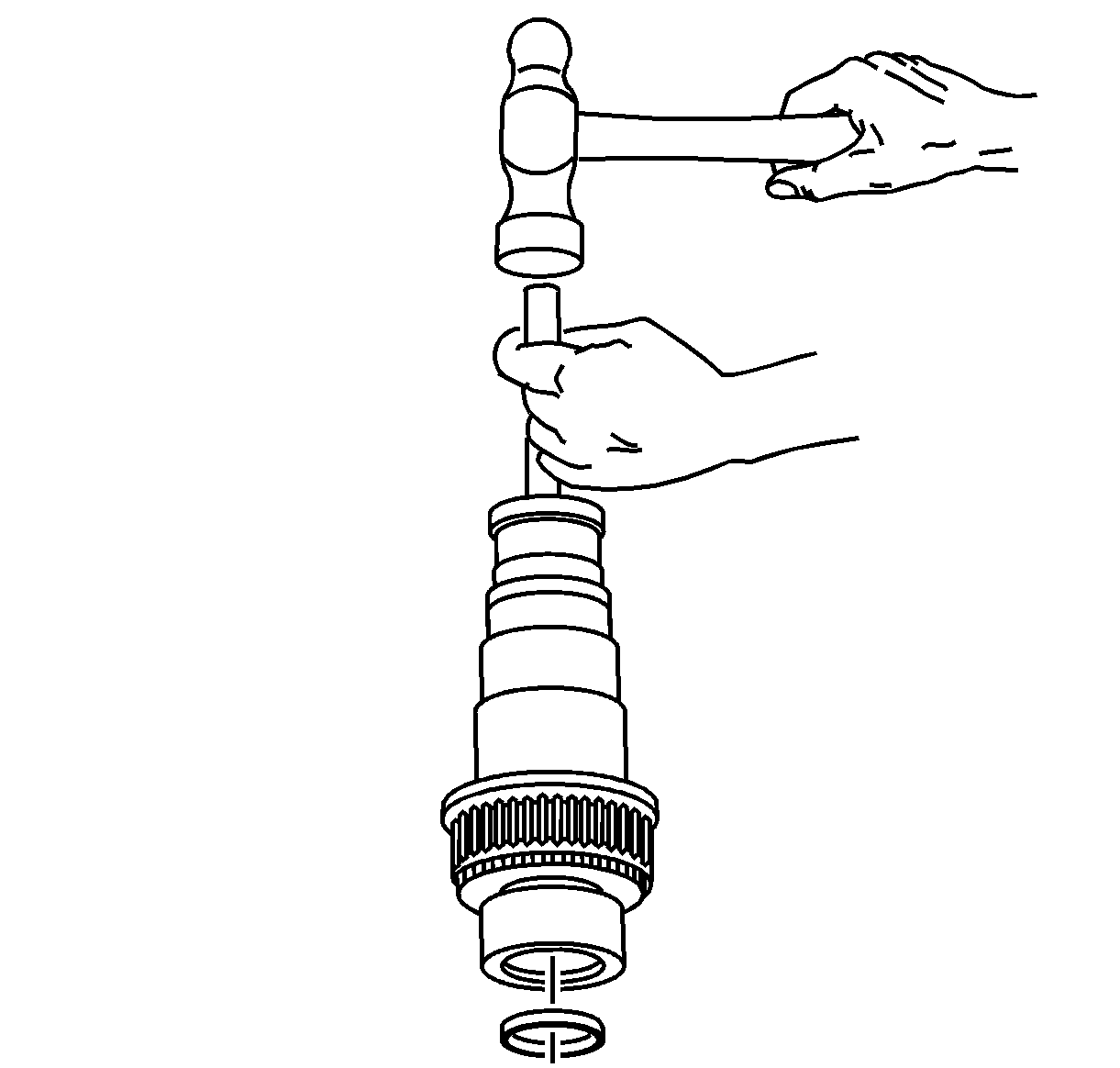
- For the NVG 246, if the cup plug in the front output shaft is leaking,
remove the plug using a brass drift.
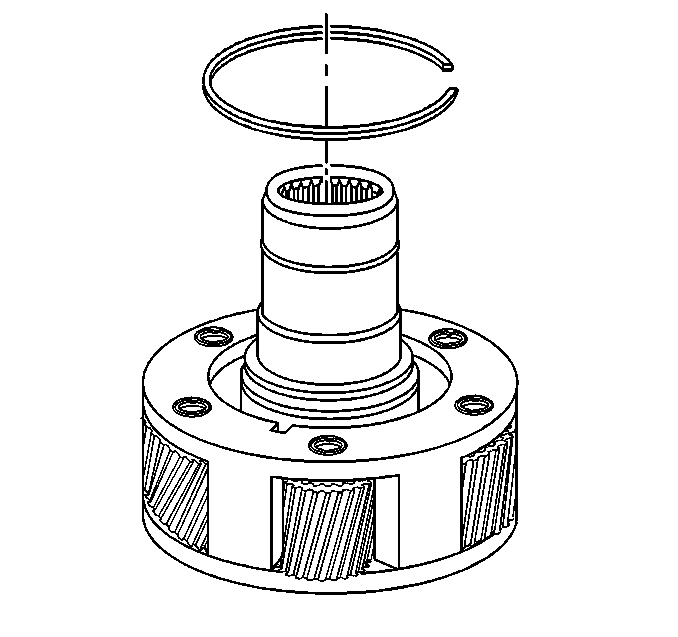
- Remove the planetary gear shaft retaining ring.
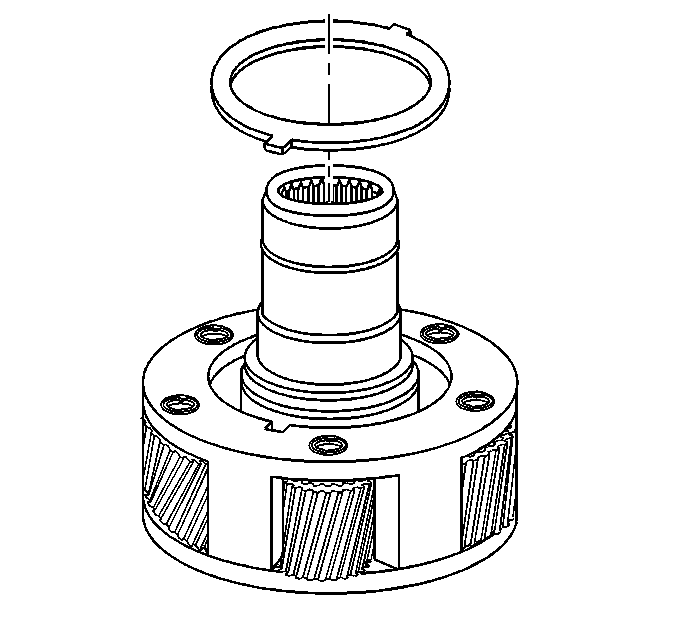
- Remove the planetary carrier lock plate.

- Remove the input gear front thrust washer.
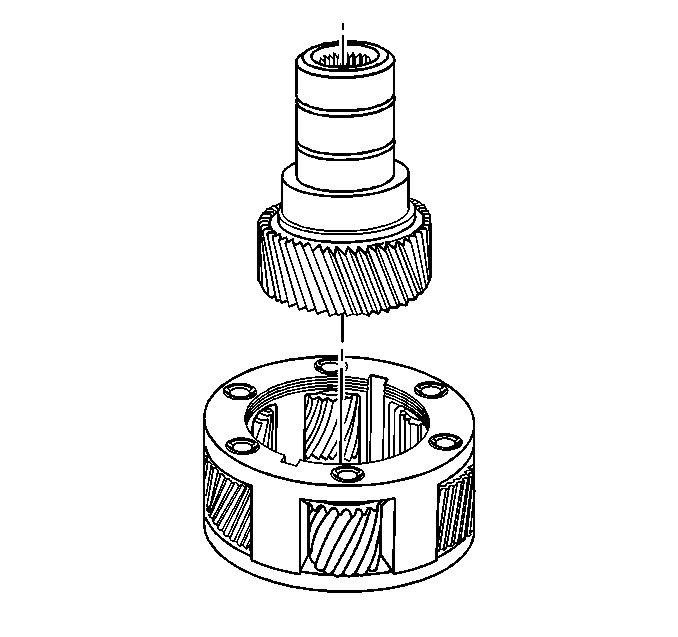
- Remove the input gear from the planetary carrier.
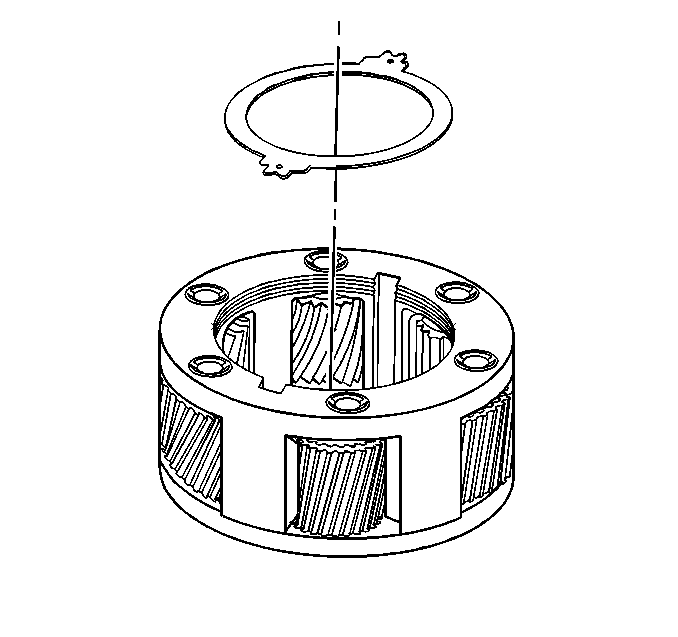
- Remove the input gear rear thrust washer.
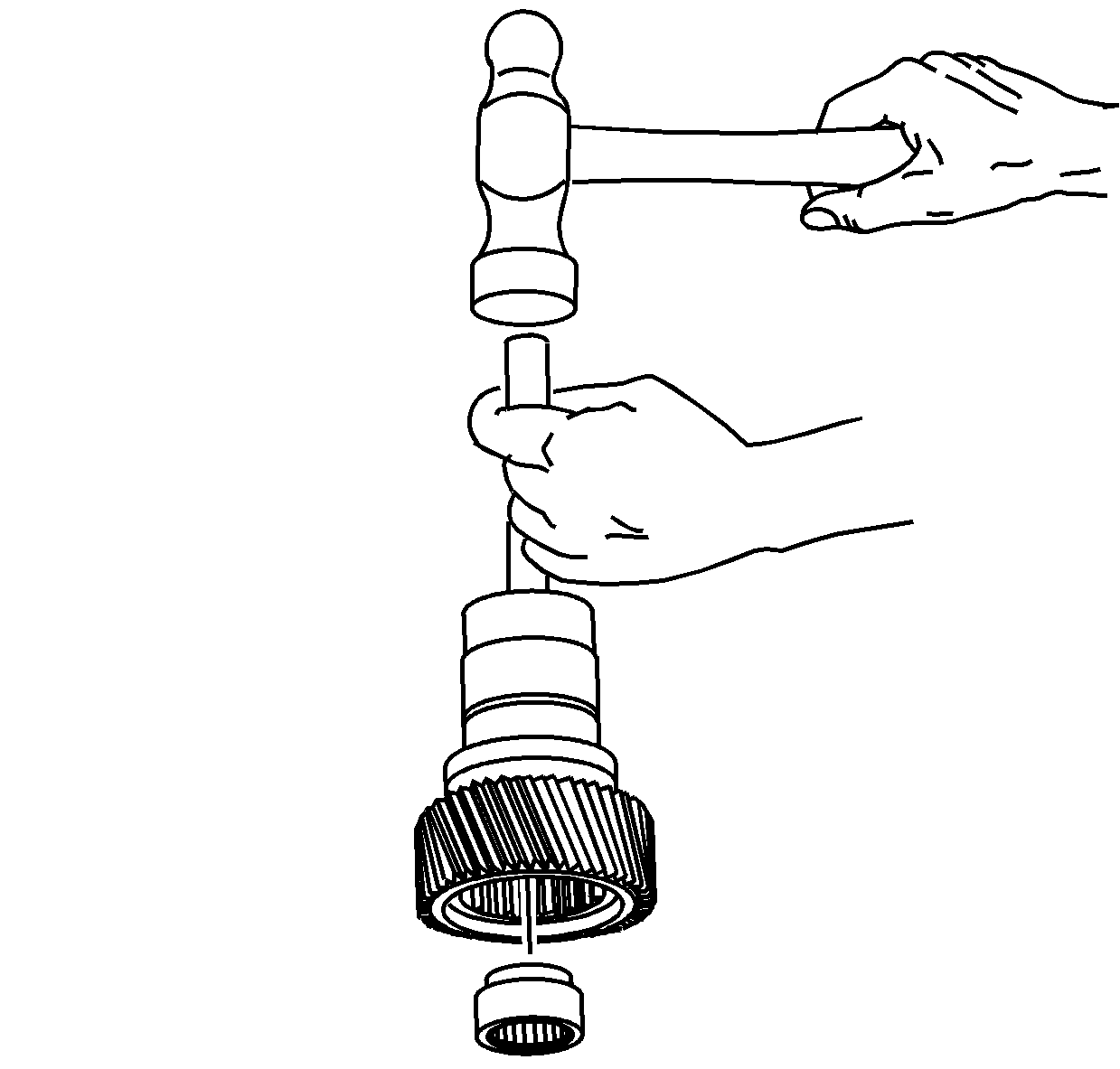
- Inspect the pilot bearing in the input gear for being faulty. Refer to
Transfer Case Cleaning and Inspection
.
- Remove the pilot bearing from the input gear using a brass drift and a hammer.
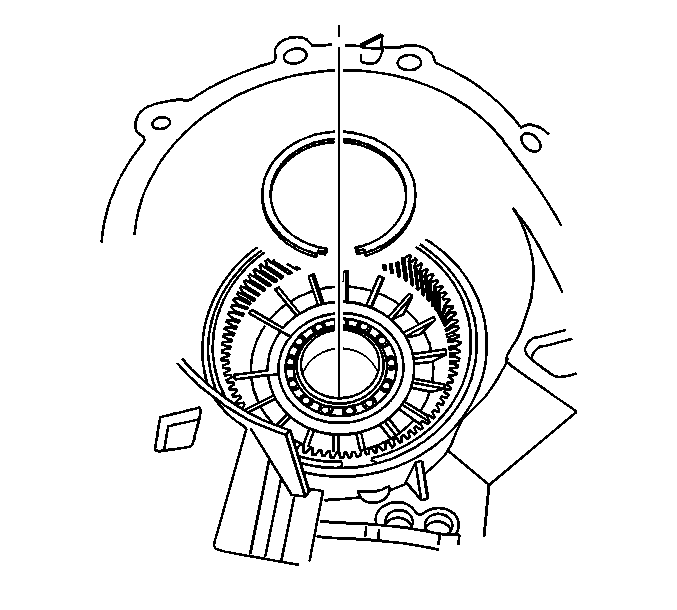
- Remove the input bearing retaining ring.
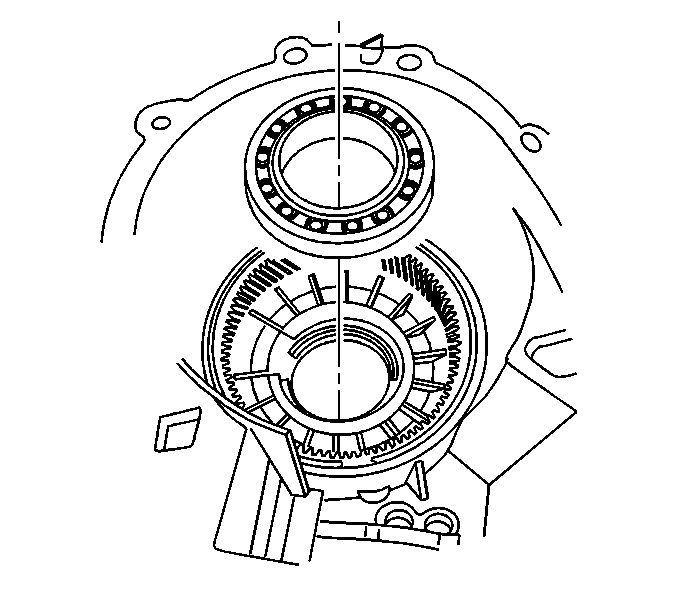
- Remove the input bearing.

- For the NVG 236, remove the front output shaft front bearing retainer ring.
- For the NVG 236, remove the front output shaft front bearing.
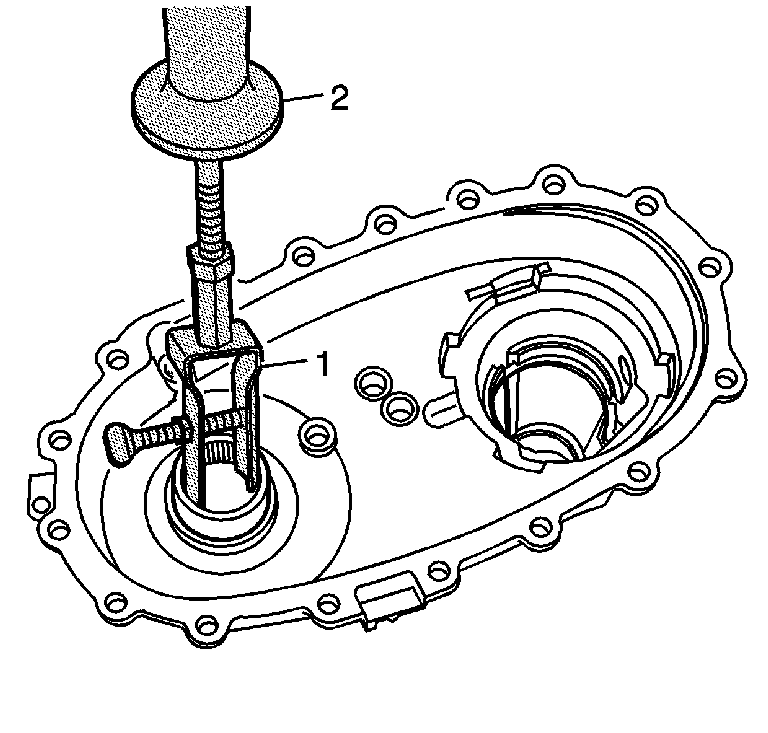
- Inspect the front output shaft rear bearing for being faulty. Refer to
Transfer Case Cleaning and Inspection
.
- If the bearing is faulty, remove the bearing using the
J 23907
(2) and the
J 26941
(1).

- Remove the retaining ring for the control actuator lever shaft.
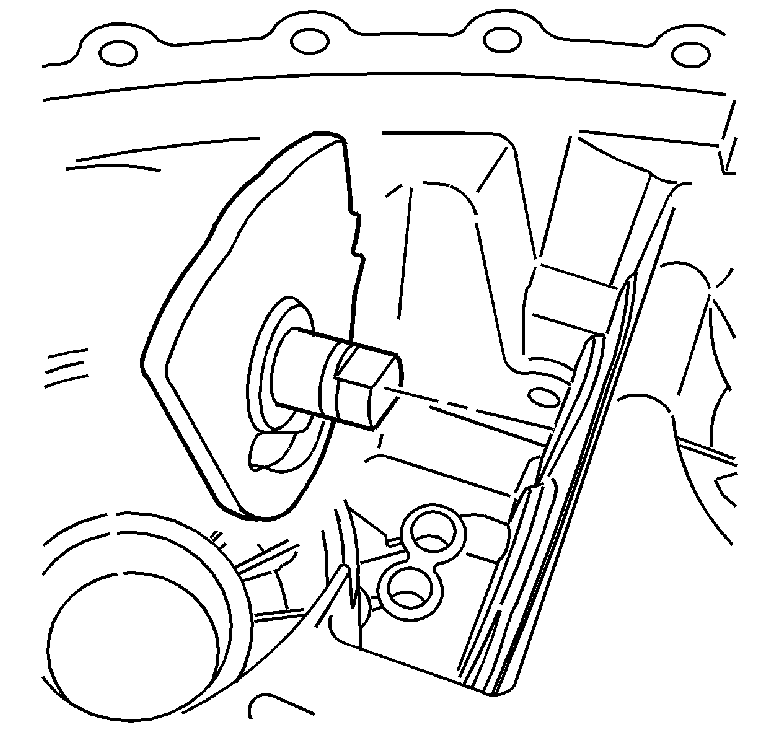
- Remove the control actuator lever shaft.
- Inspect the control actuator lever bearing and seal for being faulty. Refer to
Transfer Case Cleaning and Inspection
.
- If the bearing is leaking or faulty, remove the bearing from the case.






































































